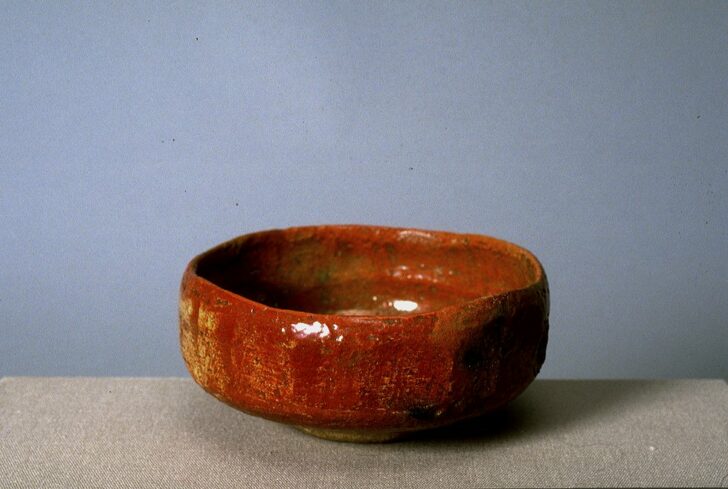Red Raku ware shallow tea bowl
Japanese

Description
Since the late sixteenth century, red has competed with black as a favored color for Raku ware tea bowls. Red Raku bowls come in an astonishingly wide range of colors, from a rusty orange to a pale pink. They are made with a clear glaze over red slip (thin, watery clay). The term Raku in Japanese pottery can refer either to a lineage of makers or to a style: here it probably indicates the style rather than the maker of the bowl. Similarities to pottery made in western Japan suggest that this bowl may come from a workshop in the Hagi or KAratsu area. The bowl demonstrates the wide appeal of the Raku technique to tea practitioners of late Edo-period Japan.
---
Raku ware shallow tea bowl
Japan, Edo period
(1615–1868)
19th century
Earthenware with red glaze
Bequest of Margaret Watson Parker, 1954/1.536
Since the late sixteenth century, red has competed with black as a favored color for Raku ware tea bowls. Red Raku bowls come in an astonishingly wide range of colors, from a rusty orange to a pale pink. They are made with a clear glaze over red slip (thin, watery clay). The term Raku in Japanese pottery can refer either to a lineage of makers or to a style: here it probably indicates the style rather than the maker of the bowl. Similarities to pottery made in western Japan suggest that this bowl may come from a workshop in the Hagi or Karatsu area. The bowl demonstrates the wide appeal of the Raku technique to tea practitioners of late Edo-period Japan.
(6/28/10)
Box inscription: "hira aka chawan" (shallow red tea bowl). Raku seal needs further research.
Subject Matter:
Since the late sixteenth century, red has competed with black as a favored color for teabowls. Red bowls come in an astonishingly wide range of colors, from a rusty orange to a pale pink. They are made with a clear glaze over red slip (thin, watery clay). Although this bowl bears a seal reading “raku,” here it probably indicates the style rather than the maker of the bowl. Similarities to pottery made in western Japan suggest that this bowl may come from a workshop in the Hagi or Karatsu area. The bowl demonstrates the wide appeal of the Raku technique to tea practitioners of late Edo-period Japan.
Physical Description:
This squat bowl is not smooth but has subtle irregularities in texture and shape, intentionally highlighted by the brilliant red glaze.
Usage Rights:
If you are interested in using an image for a publication, please visit https://umma.umich.edu/request-image/ for more information and to fill out the online Image Rights and Reproductions Request Form.